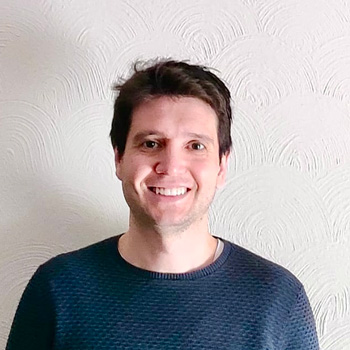Jordi Mill
4. Kaleidoscope
The future of medicine: VIDAA and the eternal promise of virtual twins
Jordi Mill,
member of the PhySense research group and co-investigator of the VIDAA project, Department of Information and Communication Technologies (DTIC), UPF
References to ‘virtual twins’ are increasingly common in the context of personalized medicine these days, popping up in documentaries, on social media and in the news. We are shown videos that monitor everything and full digital replicas of the body able to predict how a drug or operation would affect our real-life flesh and blood. Is it the stuff of science fiction? A still distant, yet plausible, possibility? Or is this reality already within reach? Although much work remains to be done, allow me to present a small current example: the VIDAA platform.
VIDAA is a platform that allows healthcare professionals to run accurate computer simulations in order to plan heart surgeries. The ability to visualize and simulate complex procedures has transformed how cardiologists approach delicate operations, where there is little room for manoeuvre and, obviously, an imperative need to minimize the margin of error.
The cornerstone of VIDAA lies in the creation and use of what is known as a ‘virtual twin’, an accurate digital representation of a patient’s heart. This simulation not only replicates the anatomy in detail, but also makes it possible to include the device to be implanted and simulate how it will behave in terms of fluid dynamics as the heart beats.
On 10 November 2023, VIDAA was used to plan a case live at the international CSI Focus LAA conference. Not only was this a milestone for the team from the VIDAA project, which is still under development at the university, it also successfully demonstrated the crucial role that virtual twins can play in the planning and performance of heart surgery. The Frankfurt operation was a success: the device was placed exactly as planned in the virtual heart, and the patient was discharged the following day with just a minor incision in his leg and a very low risk of stroke, albeit with no knowledge of how his virtual heart had contributed to this positive outcome.
In view of this success, one might wonder whether this technology could be taken further and if its use will become more frequent in clinical practice. It is not an easy question to answer. Challenges such as adapting the technology to hospital procedures, where speed, agility and efficiency are crucial, having the necessary computational resources, and, most importantly, controlling the regulation of technology and data privacy are the main hurdles.
Nevertheless, VIDAA is both an example of technological progress and an outstanding instance of interdisciplinary collaboration between medical professionals, biomedical engineers and software developers. The fusion of computer simulations, virtual twins and artificial intelligence will redefine how medical professionals approach heart surgery and offers a hopeful and promising outlook for the challenges posed by disease management and care in the 21st century.
The road will not be easy, but it falls to us to work to bring it to fruition for the benefit of society.

